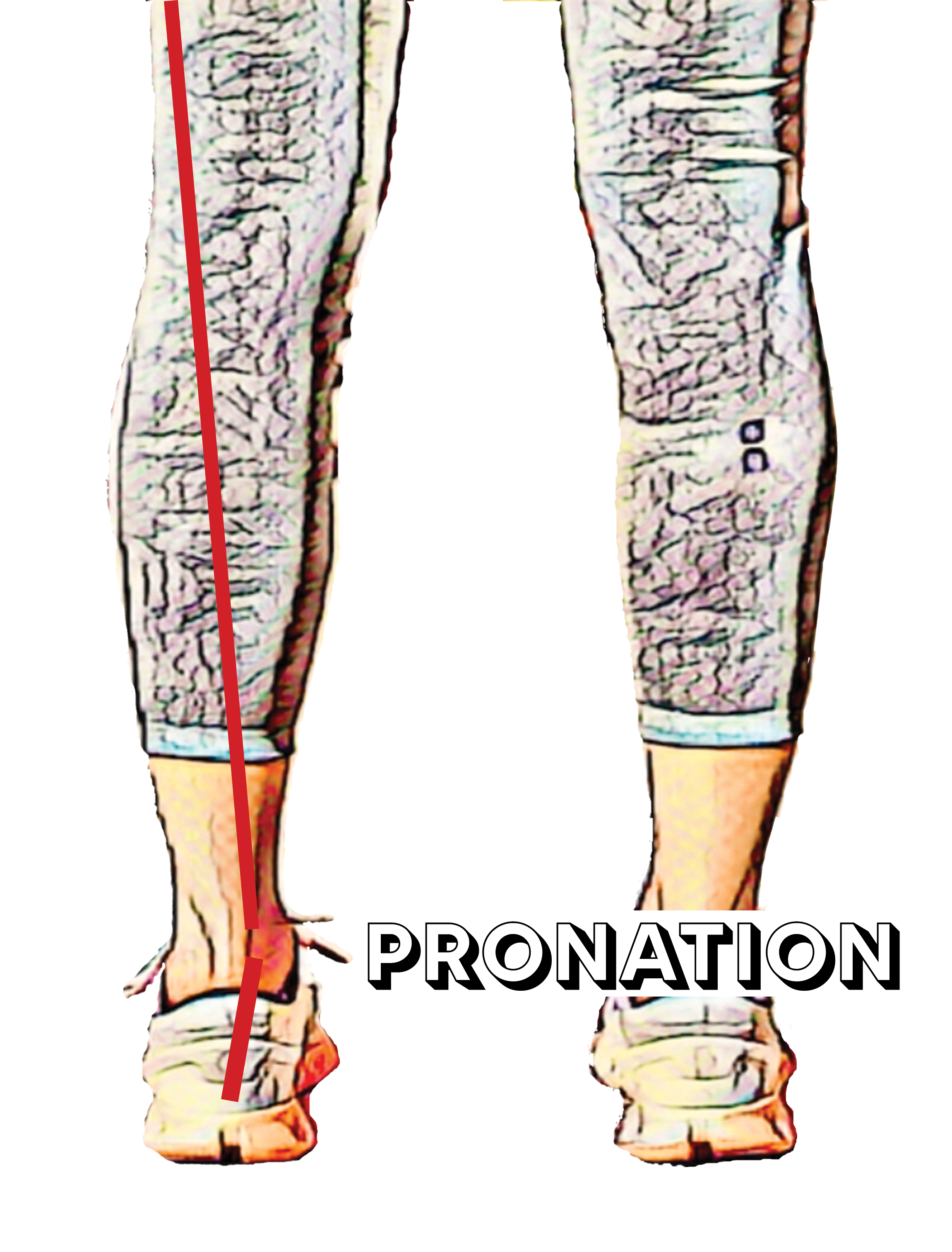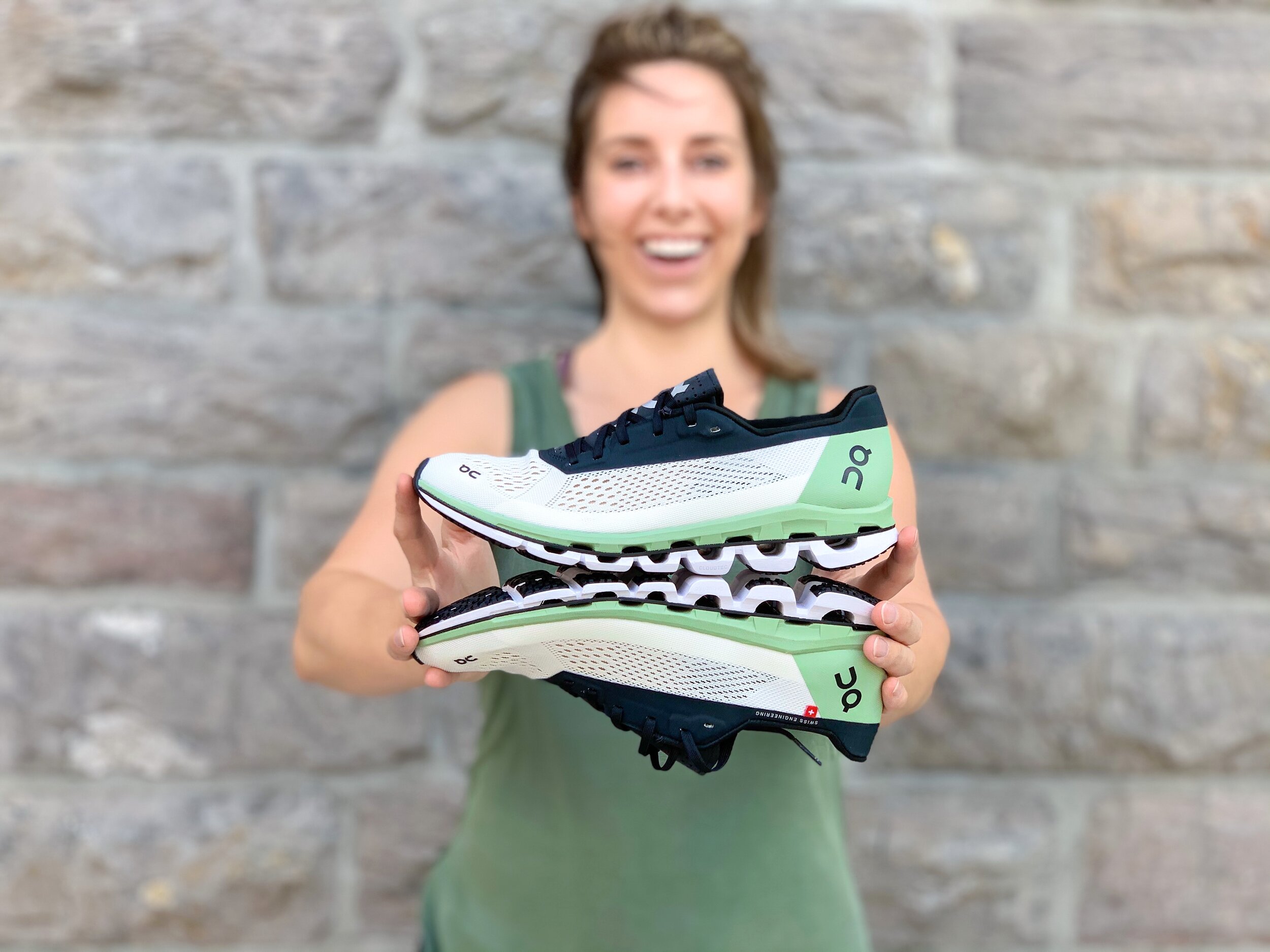Running Shoe Lingo: Explained
The most important piece of equipment every runner needs is a good pair of shoes. But when “good” means something different for everyone, how do we choose? Stepping into a running store can be overwhelming, with so many options and technical terminology to sift through. In this post, I will decode some of that running shoe lingo, like stability, pronation, and heel drop.
Stability vs. Neutral
Running shoe brands typically divide their shoes into 2 different types: Neutral and Stability. Depending on the brand, you may also see “stability” referred to as supportive or motion controlled, but these pretty much the same thing. To understand what type of shoe you need, you first need to understand a little about pronation.
Once your foot hits the ground while running, it may have a tendency to roll inwards after impact. This is called pronation. A bit of pronation is normal, but excessive pronation can lead to common injuries like shin splints or runner’s knee. Stability shoes are designed to help offset excessive pronation by adding some supportive features under the arch of the shoe.
But… how do you know if you need a neutral shoe or a stability shoe? This will depend entirely on the way that you run. Your best bet is to go to a specialty running shop (not a big-box sporting goods store) and have someone actually watch you run. I was not sure what kind of shoe I needed, but I had someone record my run in slow-motion and he was able to tell me very quickly that I was a neutral runner.
Neutral runners are lucky enough that they can get away with wearing both neutral shoes and stability shoes. They just will not use the extra support offered by the shoe. Runners who pronate, however, should avoid running in neutral shoes.
Note: Opposite to pronation is supination (or underpronation), which is an external rotation of the foot. This is less common.
Foot strike
Whereas pronation is related to side to side movement after impact, the foot strike is the part of the foot that hits the ground first with every step. There are 3 types of foot strike:
Heel strike, meaning the heel hits the ground first
Midfoot strike, meaning the center of the foot lands first
Forefoot or toe strike, meaning the front of the foot lands first
There is a lot of different research regarding what the ideal foot strike is, getting into the biomechanics of efficiency and how your legs and body absorb impact while running. My non-expert opinion is that if you are not getting injured and you feel comfortable with the way you run, you do not need to try to change anything with your foot strike.
Your foot strike will not necessarily determine what kind of shoe you need, but it is good to be aware of it. If you heel strike you may find that you are more comfortable in a more cushioned shoe.
Check out my YouTube video linked below for examples of each foot strike!
Heel drop
Heel drop (also called heel-toe drop, drop, offset, heel-to-toe offset, and so on!) is the difference in height between the heel and the ball of the foot. Most brands will show this number in the specifications of their shoes, though you may have to dig to find it.
If you have heard the term “zero drop”, this means there is no difference in height from the front of the shoe to the back of the shoe. It is important to note that heel drop does not necessarily mean anything about the level of cushion in the shoe. Brands like Hoka One One make very cushioned shoes that are still considered low drop, while other minimalist brands like Altra are less cushioned.
Traditional running shoes have about a 12 mm drop, however more and more brands are coming out with lower drop shoes (8 mm or under). The thought behind this is that a lower drop may help encourage a more natural stride when running, but really there are a few different factors that can influence this. Overall, the most important thing is that you feel comfortable in the shoes you are wearing, so don’t feel the need to change your shoes just because you see others wearing low drop shoes.
If you do decide to try out to a lower drop shoe, be sure to transition gradually. Do a few short runs in them to get your body used to the change, and do not be surprised if your calves are sore as you transition.
Responsive
To be completely honest with you, I did not know what “responsiveness” meant until fairly recently when I felt it for myself while testing these Cloudboom shoes!
This is where running shoe lingo can get pretty technical, but essentially “responsive” is referring to energy return in a shoe. The less energy lost in impact, the more energy the shoe has to bounce back in your stride. In a shoe, I describe this as feeling bouncy or springy.
The best analogy that I can think of for this is if you think about jumping on a bed. If you jump on a bed and bounce this is responsive, if you jump on a bed and your energy is absorbed this is not responsive.
While I do not think that this is the most important factor when looking for a new shoe, it is something that is seen in shoe descriptions and marketing, so I thought it was worth mentioning!
Final tips
The best shoe for you is the one that you feel most comfortable in. If you are not sure what shoe is right for you, I would highly recommend going to a specialty running shop and have them check out the way you run. They will be able to give you different shoes to try on, and often will even let you try them out at home (indoors!) within a given return window.
I always recommend shopping local, but if you want to shop the items I’m wearing online please follow the links below. These are affiliate links, which means that if you make a purchase I will make a small commission at no cost to you.





